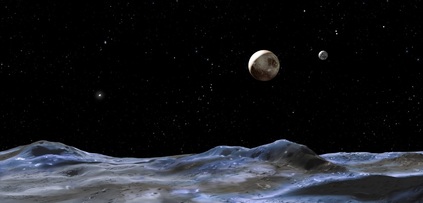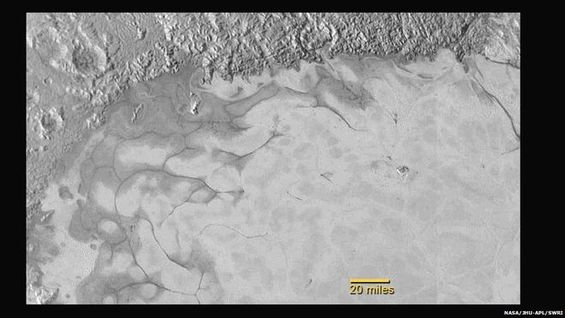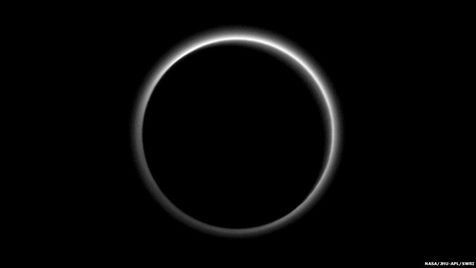

The third surface image shows a mountainous region in Pluto's southern hemisphere.

The images below show some of the features on Pluto's major moon Charon.
| How Spacecraft Fly |
|
 Since close approach of New Horizons to the Pluto system on 14 July the ground segment has been busy gathering image and science data from the spacecraft as it races away, ultimately to leave our Solar System. Although the data received so far represents only a small fraction of the total stored onboard, it nevertheless has wetted the appetite of the science team on the ground. As I said in my flyby preview blog (11 June 2015), it's going to take until nearly the end of next year to download all the scientific treasures, but here is just a small sample of some of the findings to date.  The following three images show hi-res close-ups of Pluto's surface. The surface features in some regions looks very alien and devoid of familiar landforms, making it difficult to interpret and to appreciate scale. The image to the right and below show ice covered plains - but not necessarily comprised of water ice. With an average surface temperature of -230 degrees Celsius, they are more likely comprised of frozen gaseous deposits of nitrogen, methane and carbon monoxide. The third surface image shows a mountainous region in Pluto's southern hemisphere.  During the encounter, the spacecraft 'flew' into Pluto's shadow to produce this rather splendid picture of a Plutonian solar eclipse. Scientifically this was a very valuable thing to do, as the planet's atmosphere (if it had one) would be backlighted by the Sun allowing measurements to be made of its structure and composition. Prior to the New Horizon's mission it was anticipated that Pluto might have an atmosphere. It was believed that when Pluto was closest to the Sun, surface ices would vapourise to produce an atmosphere, and then when it was at its greatest distance from the Sun, the atmosphere would freeze and collapse again onto the surface. Pluto's orbit is very elliptical, so when it is its closest to the Sun (perihelion) it is 30 AU from the Sun ( 1 AU = 1 Astronomical Unit = the mean Earth-Sun distance), and when at furthest distance (aphelion) it is 49 AU away. So Pluto's orbital position makes a big difference to the solar input. Currently Pluto is at about 33 AU from the Sun, and so fairly close to perihelion and maximum solar input, causing the atmosphere that can be seen in the image. However it is extremely tenuous - onboard sensors have measured a pressure of just a few millionths of the pressure here at Earth, with the composition being predominantly nitrogen, methane and carbon monoxide. The images below show some of the features on Pluto's major moon Charon.
0 Comments
Leave a Reply. |
AuthorGraham Swinerd - I hope to use this page to highlight current major events in space and spacececraft. Archives
November 2022
Categories |